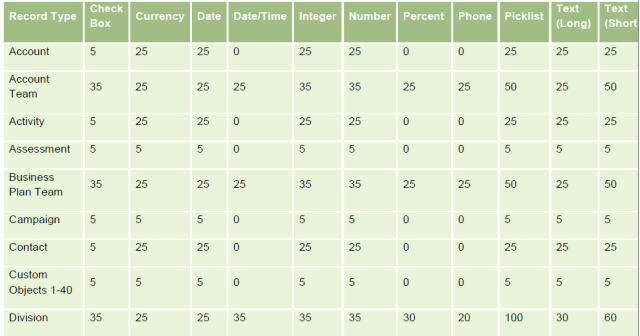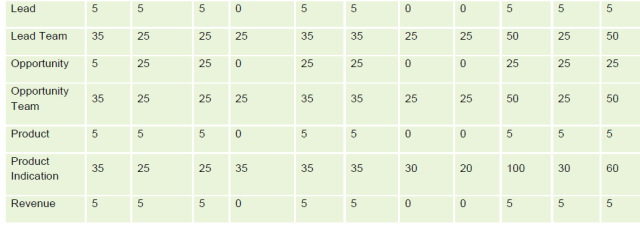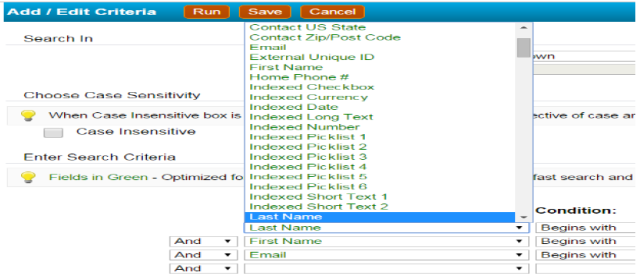In CRM OD, we have two types of Optimized fields,
Indexed Custom Fields:
- These are special fields that improve the response time during a search or when
- Indexed custom fields are preconfigured in the Oracle CRMOD database
- We can change the labels on the indexed custom fields to suit the usage, but not the integration tags
- These fields are available to be accessed using both WS 1.0 & 2.0
- The following table shows the Custom Index Fields supported for each of the Record Type

Note: For all Custom Objects, some fields use different naming conventions to those listed in the previous tables:
Index Picklist 6 = Type
Index Short Text 1 = Quick Search 1
Index Short Text 2 = Quick Search 2
Index Long Text = Name
Custom optimized fields:
- Unlike Custom Indexed fields, Custom optimized fields don’t come as preconfigured fields. Instead while creating a new custom field, we have a provision to mark a custom field as Optimized
- Before creating a new custom field, we should perform a detail assessment on the possibility of using the field as a search filter parameter either in Web services, Reports or Lists. Because a custom field can only be marked as “Optimized” at the time of creation
- These fields can be accessed only using WS 2.0
- The following table shows the Custom Search Optimized fields supported under each object by data type



Identifying the Optimized fields
We can identify the “Indexed Custom Fields or Custom Optimized” fields for a given Object using the following approaches,
- Using “new List page” of CRMOD UI: Indexed Custom Fields or Custom Optimized fields are marked in green in this page. It is very easy to identify the search optimized fields from this screen

- Navigate to Admin -> Application Customization -> Record Type (Account) -> Record Type (Account) Field Set up. In “Integration Tag Web Services v2.0” column, Integration tags with “Index or Optimized” keywords in it are search optimized field
Note: It is recommended to use only these search optimized/indexed fields as Web Services, Reports & Lists Filter parameters
Custom Fields Migration to Optimized fields
If we are already using a non-optimized field as a filter either in Web Services, Reports or Lists; After the detailed analysis if we decided to do the migration from a custom field to an Indexed Custom or Custom Optimized field to increase the performance. Before migrating the field, we have to take care of the following,
- Data migration for the existing records
- It is highly possible that the custom field might be used in one or all of these CRM OD modules. Perform a detailed analysis & change the affected modules to point & work with newly configured optimized field.
a. Web Services components
b. Workflows
c. Rules & Validations (Under Field Management)
d. Reports
e. Lists
f. URL parameters in Web Links, Applets & Tabs
g. Integration Event Queues
h. Data Rules & Assignment